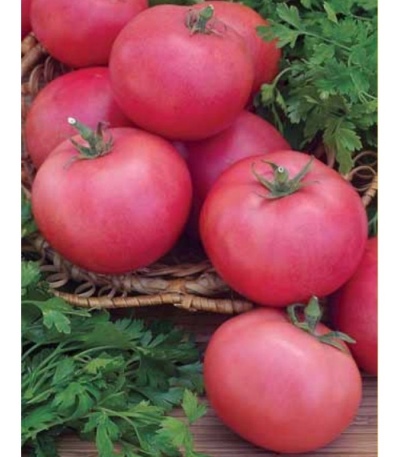
- Authors: Kondratyeva I.Yu., Kandoba E.E.
- Year of approval: 2003
- Category: grade
- Growth type: determinant
- Appointment: fresh consumption
- Ripening period: early
- Ripening time, days: 98-105
- Growing conditions: for open ground
- Bush height, cm: 45-50
- Bush characteristic: semi-spreading
The beauty of the lotus flower is undeniable, but the Lotus tomato can be just as good. You just need to know the basic subtleties of its cultivation and use. And it is also necessary to study the botanical features of such a plant.
Breeding history
The Lotus tomato was officially entered into the state register in 2003. Then they were allowed to cultivate it in personal gardens. The breeders Kandoba and Kondratyev turned out to be the developers.
Description of the variety
The lotus is one of the determinant varieties. Its cultivation in the open field is the most promising. Bushes grow only up to 45-50 cm, which greatly simplifies their care. The plants themselves develop in a semi-spreading type. The number of branches and leaves is at an average level, and the medium-sized leaves themselves are light green in color.
The main qualities of the fruit
The berries just laid by the plant from the ovaries will have a light green color. When they are ripe, they will turn pink. The average weight of the fruit is 100 g. It is always round in shape. The very first inflorescence is formed above 8-9 leaves, and then they will go every 1-2 leaves.
Taste characteristics
The flesh of the Lotus is distinguished by its expressive tenderness. There is a characteristic sweet and sour combination of flavors. Most often, the fruits are eaten fresh. Salad use is also quite possible. But the use of the crop for canning is not very justified - in this case, the taste deteriorates.
Ripening and fruiting
The lotus ripens relatively early. You can count on getting a harvest in 98-105 days after the formation of the first green shoots. Additionally, it is worth considering, however, many other factors. Often, the weather and the quality of agricultural technology change these terms quite seriously.
Yield
Mention is made of the possibility of harvesting from 8 to 10 kg per 1 m2. Real indicators will depend not only on the weather, but also on agricultural technology. It is important to choose the site properly and take care of the plants.
The timing of planting seedlings and planting in the ground
Planting in open soil is possible in the south and in the middle lane. In more northern regions, in the Urals and the Far East, the use of film shelters is strongly recommended. The approximate time for sowing seeds is 45 days before planting in open ground. This is most often done in mid-March. With normal dynamics of plant development, it can be transplanted into open ground in the first half of May.

Growing tomato seedlings is an extremely important process, because it largely depends on whether the gardener will be able to harvest at all. All aspects must be taken into account, from seedbed preparation to planting in the ground.
Landing scheme
There is a choice here: the landing according to the 700x300 mm rule manifests itself well. But some gardeners follow the 700x400mm principle - and also succeed. You often have to experiment to find the best option.

Growing and care
You usually don't need to delete stepchildren. This is done only when the bushes are heavily overloaded with shoots. Tying to the support is strictly required. Seedlings are hardened in the last decade before planting in open ground. It is also necessary to water the beds, loosen and weed the weeds. In this regard, culture is nothing unusual.




A plant needs different micronutrients at each stage of growth. All fertilizers can be divided into two groups: mineral and organic. Folk remedies are often used: iodine, yeast, bird droppings, eggshells.
It is important to observe the rate and period of feeding. This also applies to folk remedies and organic fertilizers.
Disease and pest resistance
Lotus is relatively resistant to late blight. Cracking of the berries is unlikely at normal times. But it will happen if the crop is overripe, and they will not harvest it on time. Insect pests specific to this particular variety have not been described.


Resistant to adverse weather conditions
It is an excellent drought-resistant variety. It must be understood that he will hardly survive frost well. In any case, assistance to plants in the event of unfavorable weather is required. Otherwise, you cannot count on success.
Growing regions
A similar tomato can give good yields in:
North Caucasian territories and republics;
the center of the Black Earth Region;
Moscow region;
Volga region;
northern and northwestern regions of the European part of Russia;
Ural, Siberian and Far Eastern areas.
Review overview
The taste of Lotus tomatoes is liked by almost all summer residents and gardeners. The size of the berries is not very impressive, but this can hardly be considered a serious drawback. The low susceptibility to diseases also testifies in favor of such a plant. This variety does not cause any significant complaints.Therefore, it can be safely recommended to any gardeners seeking to expand their collection.

























































































